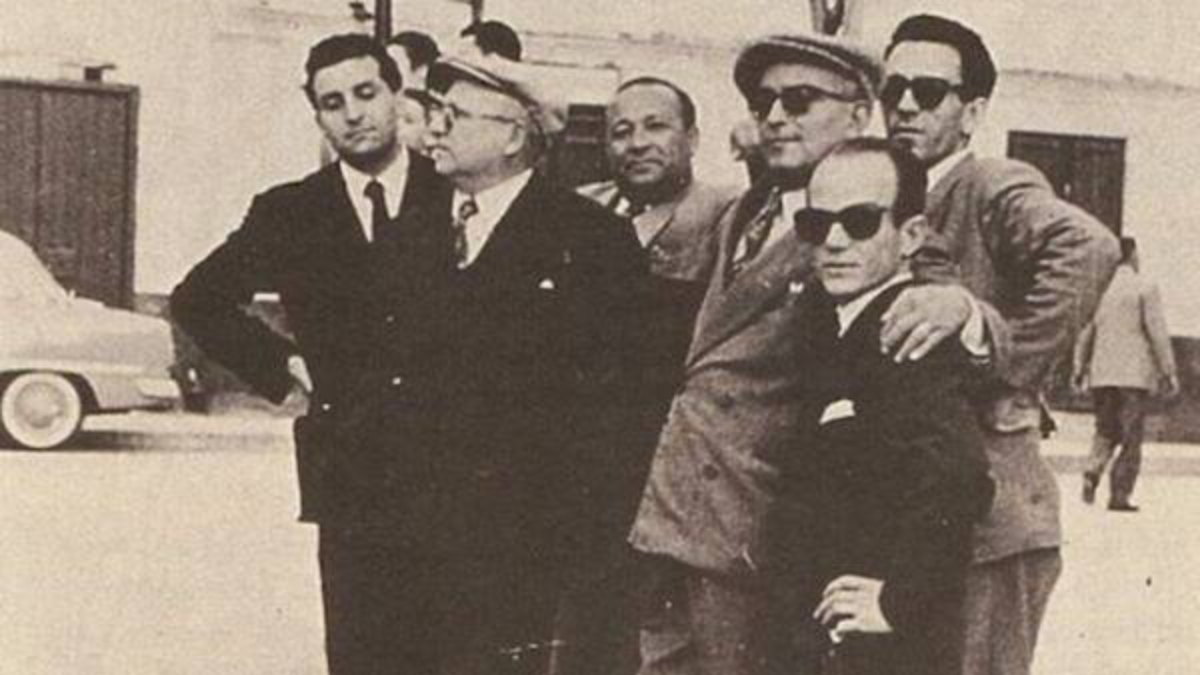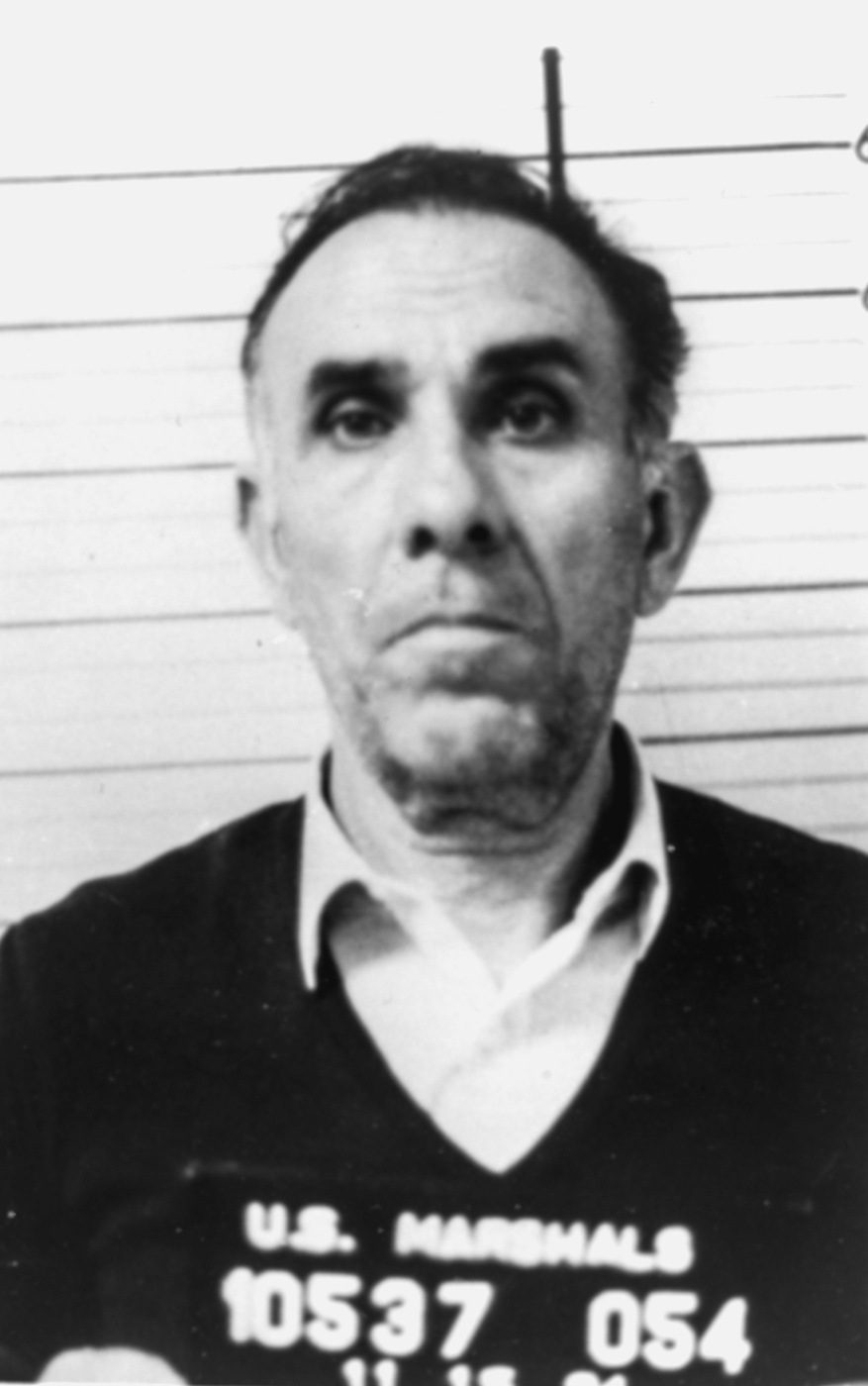Click here to read the Spanish version.
A month before the Apalachin summit in October 1957, which marked the birth of the modern Mafia, the head of one of the New York families, Joe Bonanno, traveled to Sicily to meet with some local Mafia bosses at the Hotel des Palmes in Palermo. They discussed various issues, among others, Bonanno suggested to them to create a group of all the bosses to deal with sensitive issues and thus avoid continuous wars: thus was born the Sicilian commisione, in the image of the American one. But, above all, at that meeting they talked about heroin.
It had been two years since a new law cracked down hard on drug trafficking in the United States. In addition, the Cuban “door” had become unsafe in the face of the advance of Fidel Castro’s revolutionaries. To avoid ending up with all their men in prison, the Commission (which brought together the heads of the main mafia families) had forbidden doing business with drugs, although they were actually raging to find a safe way to do so in view of the profits involved. Then it occurred to them to talk to the “cousins” of the old Sicily to get them into the business and thus draw up a network that would ensure the supply with the least possible risk.
It took some time to set it up, until the perfect idea was born: a network of pizzerias throughout the country that received raw materials directly from Italy. Inside those cans, boxes and packages of food would also travel from now on a select assortment of the best drugs. In the late sixties, a hundred Sicilians, unknown to the FBI, were arriving in the U.S. to open their pizzerias all over the country, especially on the East Coast (it is estimated that about 70 percent of the meat currently consumed in the Manhattan area is controlled by one of the Five Families, so the relationship of organized crime with food has never been anything unusual). However, there was still the final touch to get the business off the ground, and it came from one Richard Nixon.
INSIDE THOSE CANS, BOXES AND PACKAGES OF FOOD ALSO TRAVELED AN ASSORTMENT OF THE BEST DRUGS.
In 1969, before dedicating himself to bugging his political opponents, Nixon decided to get serious about drug trafficking and earmarked significant budget allocations for this purpose. With such means, he managed to dismantle the so-called French Connection, a Turkish and Corsican drug trafficking network with a stopover in Marseilles that would inspire two excellent films of the same name starring Gene Hackman. The irony is that the dismantling of the French Connection was an operation designed by the CIA and executed by Cosa Nostra itself, in one more of the various collaborations they carried out together. In this case, the gangsters were particularly interested in this particular case: with the disappearance of the Marseille network, the entire market was in the hands of the Pizza Connection.
A juicy ‘franchise’
By the mid-1970s, the new network was already in full swing. The gangsters bought morphine in Asia and refined it in Sicily by French chemists who had been “recycled” from the French Connection. The heroin was then distributed in the USA. In this way, the mafia monitored and dominated the whole process. They had absolute control of heroin trafficking until the mid-1980s. The Palermo bosses, Stefano Bontate and Salvatore Inzerillo, sold heroin at $50,000 per kilo to the Gambinos in New York, who resold it for $130,000. The Sicilians earned thirty-five million dollars a year. The Americans, ninety. These floods of money ended up in Swiss accounts.
The key men of the Pizza Connection were Gaetano Badalamenti and Salvatore Toto Catalano. The former was a mafia boss from Palermo, while the latter, also born in Sicily, was a caporegime of the Bonanno family, owner of a bakery in Queens (New York). They were the links that allowed the drug trafficking network to run like clockwork for several years. Between 1979 and 1984, with the machinery at full capacity, nearly 800,000 kilos of heroin entered the U.S. through this route, with a street value of around 1.65 billion dollars. Although the Commission did its best not to lose control of the operation, the truth is that the Sicilians ended up taking the biggest slice of the pie. They established relatives and friends all over the country, always at the head of pizzerias that distributed the drugs to customers.
The dismantling of the Pizza Connection also came from Italy, from the hand of Judge Giovanni Falcone and the pentitos (repentant mafiosi). The internal wars in the Sicilian mafia broke out at the beginning of the 1980s, led by Totò Riina, leader of the Corleonesi clan, whose lust for power knew no bounds. They sent the Bontate and Inzerillo leaderships to the cemetery and took over the whole business, but their savage attitude also led some mafiosi to break the omertà to get state protection for themselves and their families. It was not that simple, though: Salvatore Contorno was one of those pentitos, and before the process was over, Riina had already murdered thirty-five of his relatives.
Another key player, one of the most important in the history of the Mafia, was Tommaso Buscetta. He put Judge Falcone on the trail of the entire Pizza Connection structure. For their part, the United States was not sitting idly by. Undercover FBI agent Joe Pistone (aka Donnie Brasco) was also obtaining very interesting information, infiltrating the Bonanno family between 1976 and 1981. Falcone and the FBI was one of the first international judicial collaborations, which, moreover, ended with a remarkable success.
El capo, a stroll through Madrid
Eventually, the investigation became a massive multi-national, multi-agency effort, with key contributions coming from the New York Police Department, the Drug Enforcement Administration (DEA), U.S. Customs and international authorities in Italy, Sicily, Spain, Switzerland, Turkey, Brazil, Canada, Great Britain, and Mexico. For more than four years, the FBI and its partners compiled a mountain of records and evidence in order to build the case.
In the end, on April 9, 1984, a legion of federal agents raided homes and pizzerias across the United States. They found guns, hundreds of boxes of ammunition and plenty of cash. In the days that followed there were more arrests. One of the most notorious, however, took place on this side of the Atlantic, in Madrid to be precise. The boss Gaetano Badalamenti, whose whereabouts were unknown, was arrested by the Spanish authorities at the request of the FBI when he was leaving an apartment in the Spanish capital where he was spending a few days with part of his family. He was caught along with his nephew Pietro Alfano, who was in charge of Midwest operations.
Toto Catalano was also shackled in his Queens bakery.
The ‘maxi process’
The Pizza Connection case resulted in one of the longest criminal trials in U.S. history. The prosecution team initially estimated it would last six to seven months, but it ended up being seventeen. The result was a staggering legal circus with thirty-five initial defendants and an estimated cost of fifty million dollars.
In the end, twenty-two people were tried, although only nineteen were sentenced; the other three were killed before the trial was completed. Nearly three years later, in March 1987, seventeen of those individuals, two of them allegedly executives of crime families, were convicted of orchestrating an international narcotics network that stretched from Brazil to Sicily and from New York to the Midwest. Only one of the nineteen defendants was acquitted, the rest received moderate sentences except for Badalamenti and Catalano, who were sentenced to forty-five years in prison in both cases.
A LEGION OF FEDERAL AGENTS INVADED PIZZERIAS ACROSS THE COUNTRY IN 1984.
The greatest irony of the Pizza Connection trial is that, even after the flashy FBI raids and that macro trial, not much was actually accomplished on the street. After it was all over, the Mafia was still selling drugs: the defendants were simply replaced by new soldati. In The Pizza Connection: Lawyers, money, drugs, mafia, journalist Shana Alexander explains that “the trial impacted the Mafia in the sense that it shut down a very lucrative operation that ran smoothly and generated a lot of steady revenue. Ultimately, however, it was business as usual. Heroin continued to flow into New York and other U.S. cities.” And the pizzerias went back to just shipping out their delicious creations.


